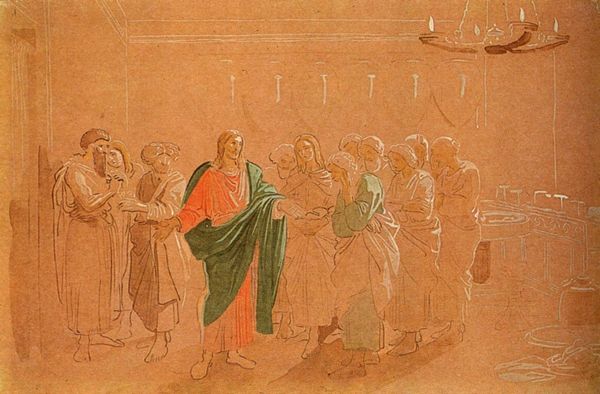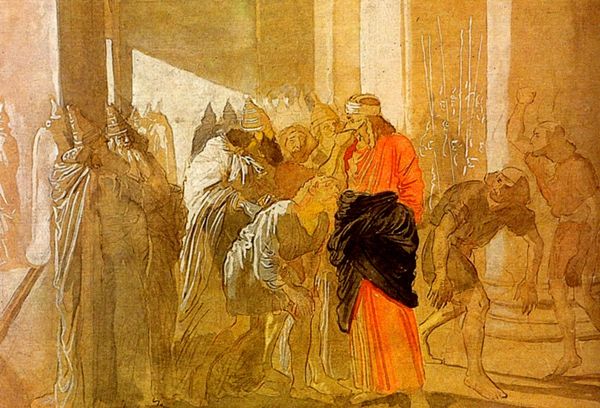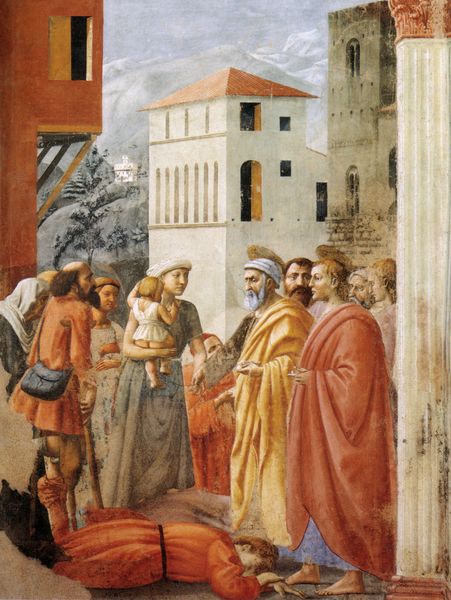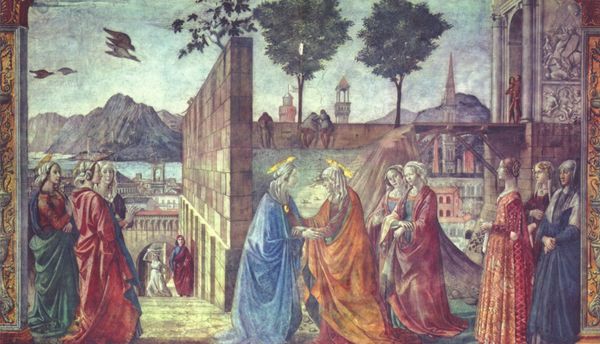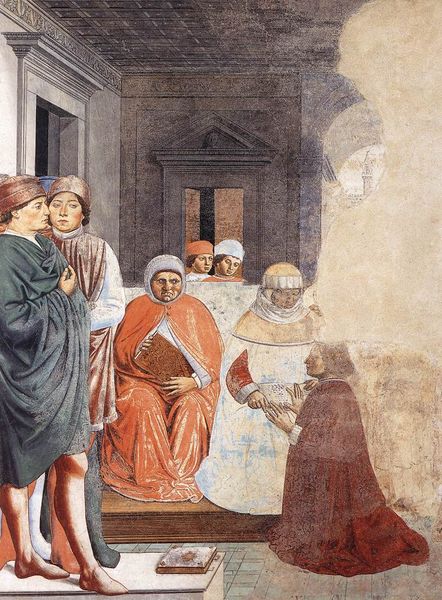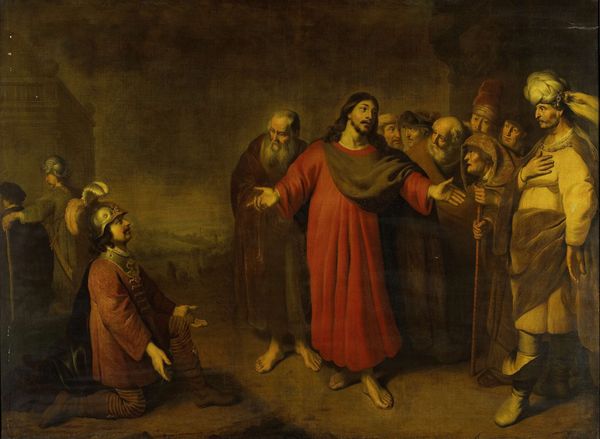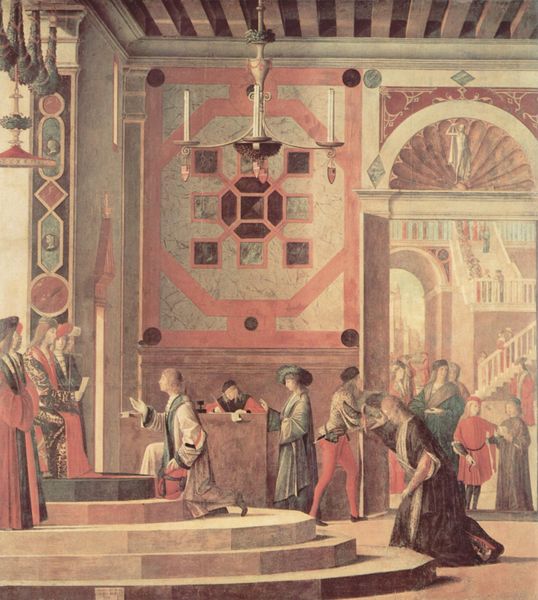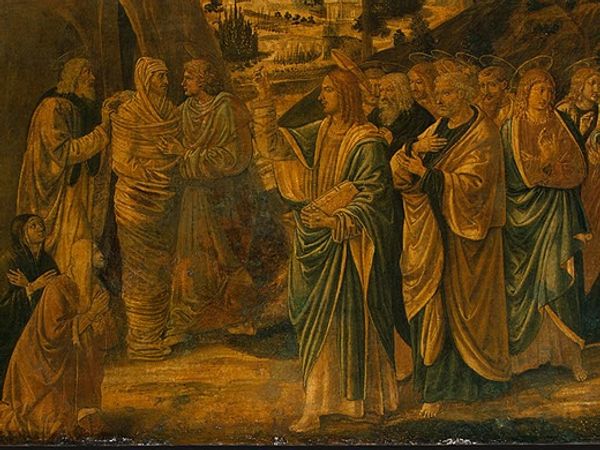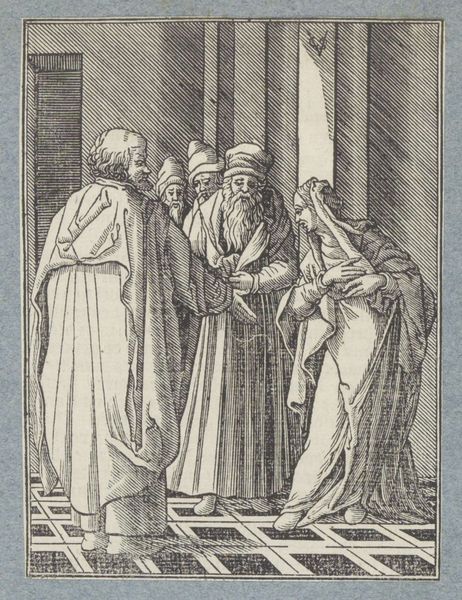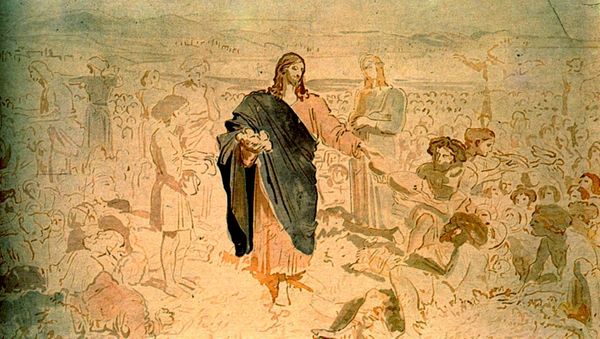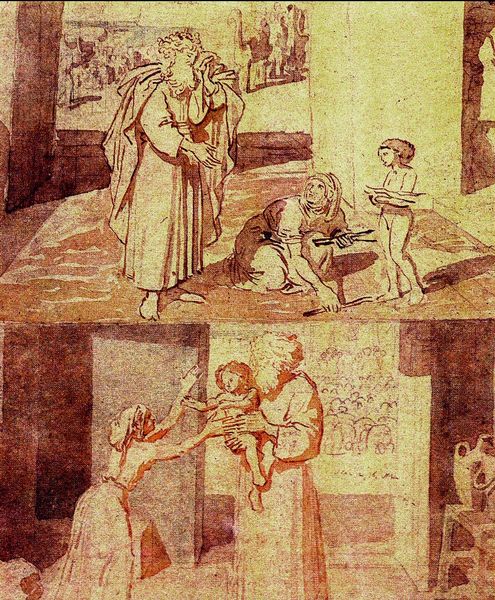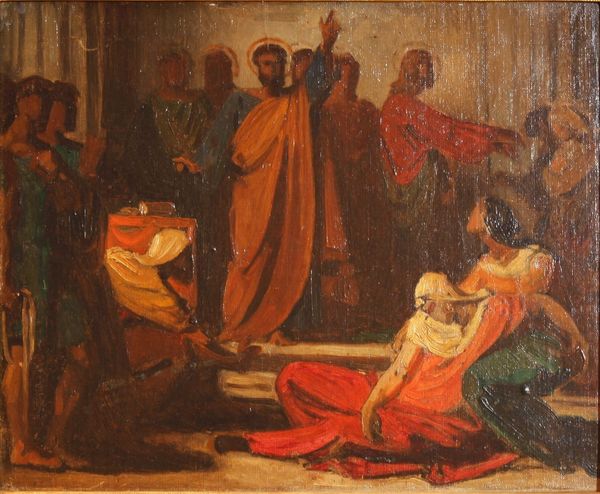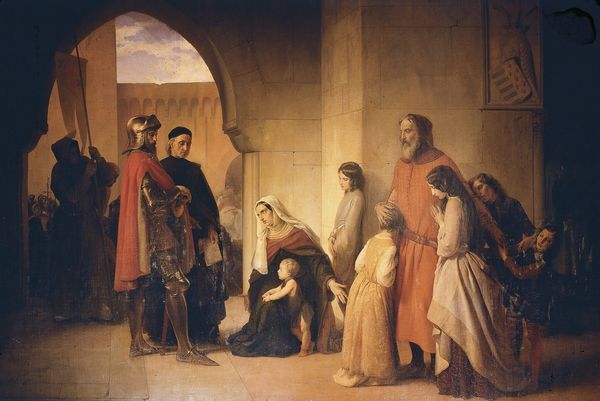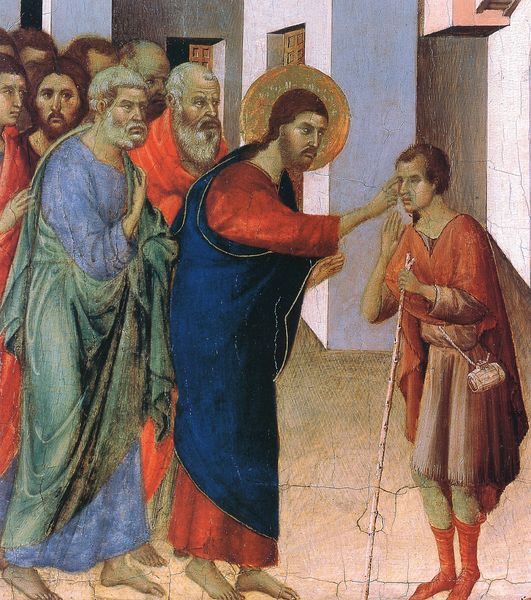
painting, watercolor
#
water colours
#
narrative-art
#
painting
#
figuration
#
watercolor
#
jesus-christ
#
coloured pencil
#
christianity
#
history-painting
#
mixed media
#
watercolor
Copyright: Public domain
Curator: Alexander Ivanov’s watercolor and colored pencil drawing, titled "Jesus and Nicodemus," dates from 1855. I find it striking, don’t you? Editor: Yes, it's quite compelling. There’s a quiet intimacy that really stands out to me. The muted palette, primarily reds and ochres, lends a somber and reflective mood. It feels like a clandestine meeting captured in watercolor. Curator: Precisely. The painting illustrates the biblical story of Nicodemus, a Pharisee and member of the Sanhedrin, who comes to Jesus at night to discuss his teachings. Ivanov was very interested in the public and the political implications of such meetings, especially within rigid religious hierarchies. Editor: It’s fascinating to consider the historical and political implications surrounding this dialogue. The narrative speaks to the personal negotiation of power and faith. Notice the stark contrast between Nicodemus in his elaborate garments, weighed down perhaps by societal expectations, and the relative simplicity of Jesus. Curator: Ivanov’s technique is remarkable; you see this in the subtle modeling of their faces. Nicodemus leans forward in quiet desperation toward Jesus, and you almost wonder if that desire isn’t indicative of internal conflict over Jesus’ message versus societal expectations. Nicodemus occupied an elite position within the community. Ivanov portrays him as a respected figure trapped in political constraints. Editor: I also see the shadows in the backdrop which suggest a secretive encounter. This contrasts with the radiant figure of Jesus whose message threatens the established political order, embodying notions of emancipation. I imagine that in its time, Ivanov’s "Jesus and Nicodemus," provoked questions about faith and individual freedom, and continues to do so. Curator: Absolutely. Its enduring relevance resides in Ivanov's rendering of this clandestine exchange and its implied sociopolitical disruptions. What do you think about these enduring themes? Editor: Ultimately, Ivanov gives us much to consider. I think this drawing urges a broader contemplation on faith, identity, and freedom from oppression, which continues to inspire contemporary conversations.
Comments
No comments
Be the first to comment and join the conversation on the ultimate creative platform.
